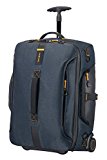Suitcase purchasing advice: how to choose the right product
- What you need to know
- Consumers have the choice between hard-shell and soft-shell suitcases. Hard-shell suitcases are made of plastic and are usually strong and durable, but also less flexible.
- Soft-shell cases are made of textile fabric and are elastic; however, they are not as durable.
- Two wheels make the case more stable, while four wheels ensure greater mobility.
- Air travellers in particular are advised to inform themselves in advance about the luggage regulations of the respective airline in order to avoid additional costs.
- When travelling to the USA, make sure to use a TSA-licensed lock.
What types of suitcases are there?
Basically, suitcases can be divided into two groups: hard-shell and soft-shell suitcases. The former have a surface made of hardened plastic, while the latter have a soft fabric surface. Suitcases are exposed to constant stress when travelling and should be protected accordingly. Frequent travellers in particular depend on the functionality and stability of their suitcases.
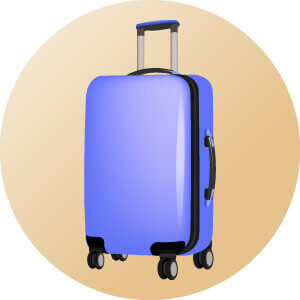
Hard-shell suitcases
These suitcases are popular with frequent travellers because they are very stable and robust. The suitcases are well protected against bumps and falls. The contents of the suitcase are therefore also reliably protected. They also retain their shape and are hard-wearing. Hard-sided cases are made of aluminium or plastic. However, they can be somewhat heavy and are not very flexible.
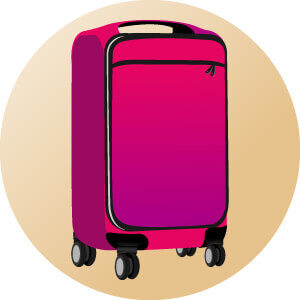
Soft-shell suitcases
The surface consists of a textile fabric, usually a synthetic fabric such as nylon or polyester. The material is very flexible and stretchable. The suitcases are relatively stable, but not as robust as hard-shell cases. Therefore, these suitcases are much more sensitive to weather conditions. They can also be filled beyond their official volume, as the material can stretch out somewhat. Various outer compartments offer additional storage space.
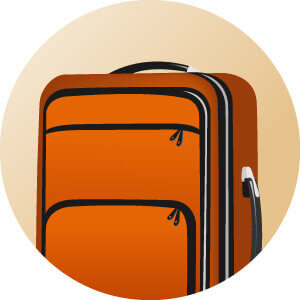
Semi-hard suitcases
Semi-hard shell cases are the hybrids among suitcases. They combine the advantages of both types of suitcases. The bulk of a semi-hard case is made of a soft material and offers high flexibility. The front compartments offer additional storage space. To protect from impacts, the corners and the frame are made of a hard plastic material. The cases are therefore very robust and yet lightweight.
What size should a suitcase be?
You should choose the size of your suitcase depending on the amount of luggage and the duration of your trip. Suitcase sizes are generally given in liters, as the volume is decisive for the amount of contents it can store. But keep in mind what means of transport you are using. On aeroplanes, you must consider the permitted dimensions of the airline to avoid additional costs. On trains, on the other hand, there are no suitcase size limits. However, bear in mind that trains only offer limited storage space. For a business trip, a pilot’s case is usually sufficient. For a trip lasting several weeks or a summer holiday with children, you should choose a large hard-sided suitcase with sufficient volume.
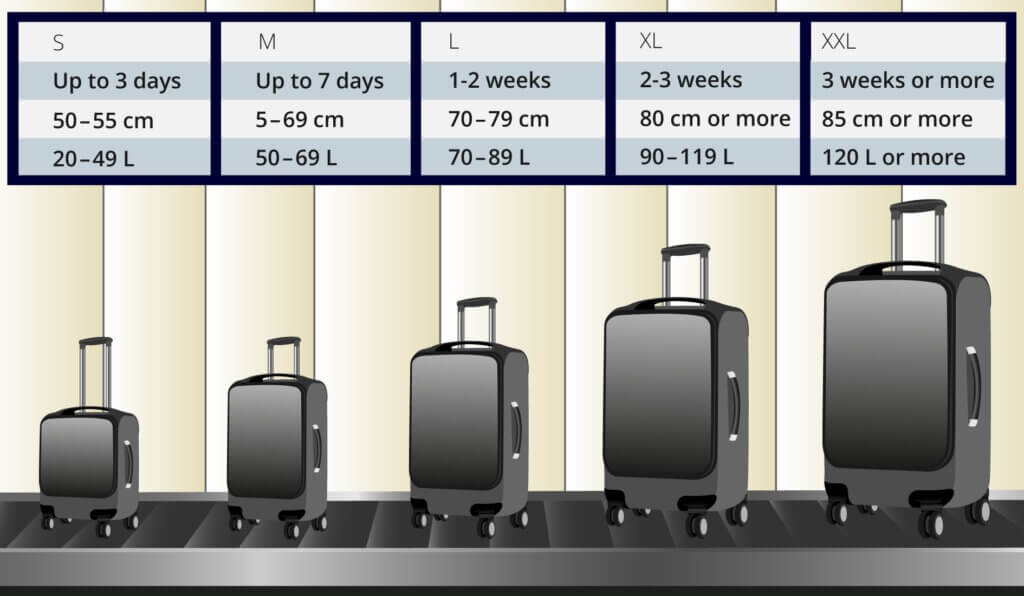
Can suitcase volume be expanded?
The volume of a suitcase can only be expanded in some models. Some suitcases have an expansion fold that can be opened with a zip. This fold increases the depth of the suitcase by a few inches. In most cases, this allows you to expand the volume of the suitcase by about 10%. Note that this also changes the overall dimensions of the suitcase, and it may no longer fit the requirements of the airline.
Purchase criteria
Before buying, be clear about what you want to use the suitcase for. The duration of your trip is the most important consideration. Your means of transport determines what size of suitcase you can take with you. After all, your suitcase must have enough space for all the things you need, but still not be too bulky.
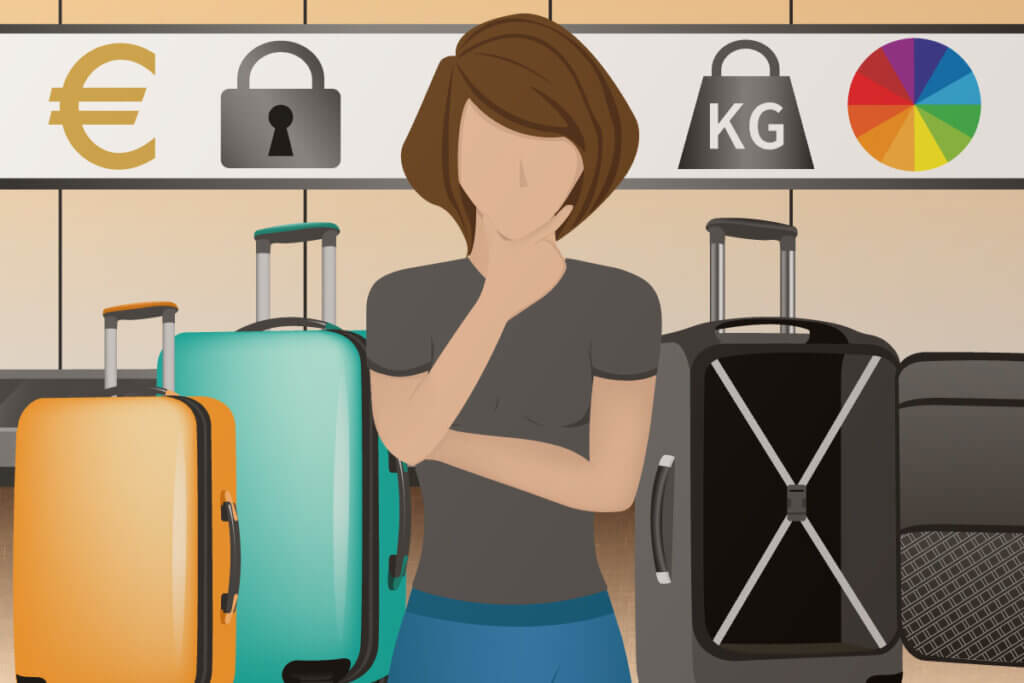
Telescopic handles
A telescopic handle doesn’t only make it easier for you to handle the case, but it also increases the carrying and rolling comfort. Make sure the handle is of a suitable quality. It should be adjustable so that it can be adapted to your height. It must be possible to pull it up and press it down without it getting stuck. In addition, it must not break in the event of a fall. The handle should also be of high quality and firmly screwed on so that it does not start to wobble or even break off.
Wheels
Suitcases have either two or four wheels. They are recommended if you have to travel long distances with your suitcase. Rubberized smooth-running wheels reduce noise. Pay attention to the quality and workmanship of the wheels and the maximum load weight. Otherwise, the wheel axles may break, or the wheels may come loose.
Suitcases with two wheels have the advantage that they are very stable and do not roll away if left on an inclined surface, since the weight does not rest exclusively on the wheels. Soft-sided suitcases, however, can tip forward if they are too heavy in the front. In addition, the wheels are rigid and do not move — they just roll. This is different from a suitcase with four wheels: These turn around their own axis and make suitcase transport very flexible, as it is not necessary to tilt them. However, as soon as one wheel breaks, the suitcase loses its stability and mobility. This is not unlikely, as the load on the individual wheels is higher and more constant than on a two-wheel model.
Tare weight
The weight of a suitcase depends on its size and material. A light suitcase can prevent back pain or posture problems. At the same time, you do not have to compromise on quality: Most manufacturers focus on using lightweight yet shock-resistant materials. Air travellers should pay particular attention to tare weight. Many airlines set a weight limit for luggage, typically around 50 pounds (23kg) for most airlines, which you must not exceed.
Inner pockets and division
Especially business travellers care about optimal storage of clothing and work materials: A laptop compartment and a shirt compartment are essential. A separate shoe compartment can also be an advantage. The interior should be designed so that the contents don’t slip or crease. For family and single-person suitcases, interior dividers and additional zipped compartments are useful to separate the contents as needed. This way you can keep your clothes and cosmetics neatly organized. A laundry compartment is useful for separating dirty laundry from clean laundry during the trip. Cross straps keep your things in place. If you need optional additional storage space, you should buy a suitcase with an expansion fold. This allows you to increase the volume of the interior. This is also useful for those who plan to stock up on souvenirs during their trip.
Locking mechanism
Many cases have a three-point closure: Three levers on the side pull the two halves together and close the case tightly. This protects the suitcase from bad weather. Many models only come with zips, which can be water-permeable in heavy rain.
A lock protects your suitcase from unauthorized access. Unless the suitcase model has an integrated combination lock, you should buy a padlock. These can be opened either with a numerical code or with a key. Of course, you can also attach an additional locking mechanism to a suitcase with an integrated lock and thus maximize the security of your suitcase contents. Since locks can be picked, you should still keep an eye on your luggage and not leave it unattended.
TSA locks
Travellers to the USA have to pay attention to one special feature: the TSA lock. The Transportation Security Administration is allowed to open and search your suitcase without your consent. Selected officers are allowed to open your suitcase with a TSA master key. If a TSA officer has searched your suitcase, you will be notified by a note or tape on the suitcase. If you do not use a TSA lock, you risk having your luggage opened forcibly and be damaged in the process. The TSA has the right to do this, but you have no right to compensation. There are currently two manufacturers of TSA locks: Travel Sentry and Safe Skies.
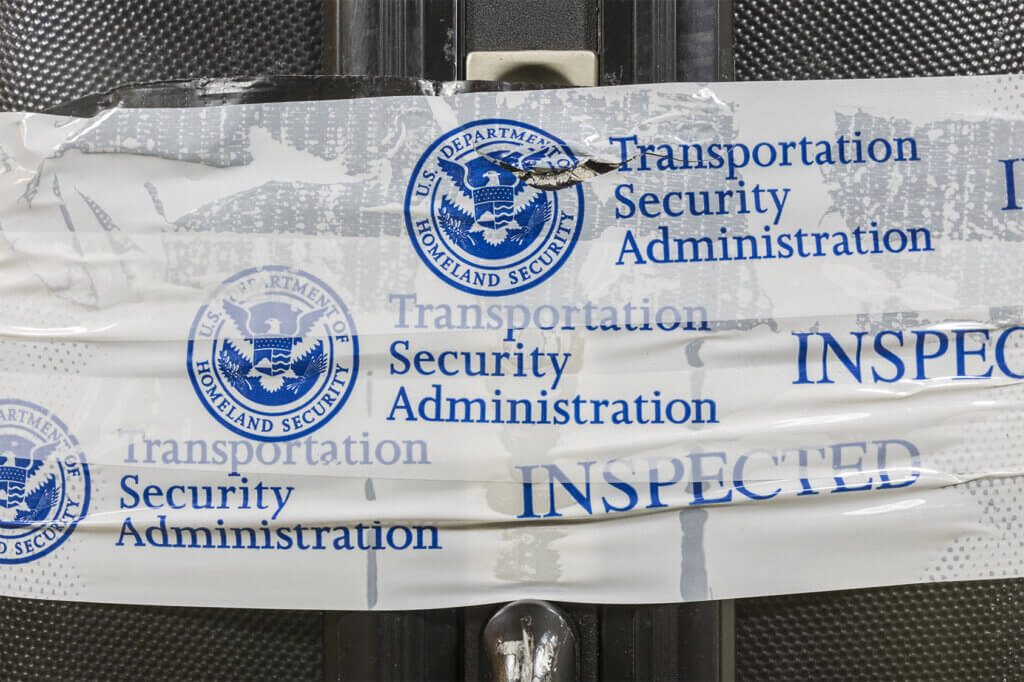
Design
Most manufacturers offer their suitcases in various colors and patterns. An eye-catching design not only adds a fashionable touch, but also has a practical benefit. It allows you to quickly recognize your suitcase. Especially at the baggage claim at the airport or in the coach, confusion can often occur. In the best case, you can prevent this with a bright color or an unusual pattern. However, there are also exceptional cases: As a business traveller, you should always opt for a classic color like black, grey, or brown to make a more serious, professional impression.
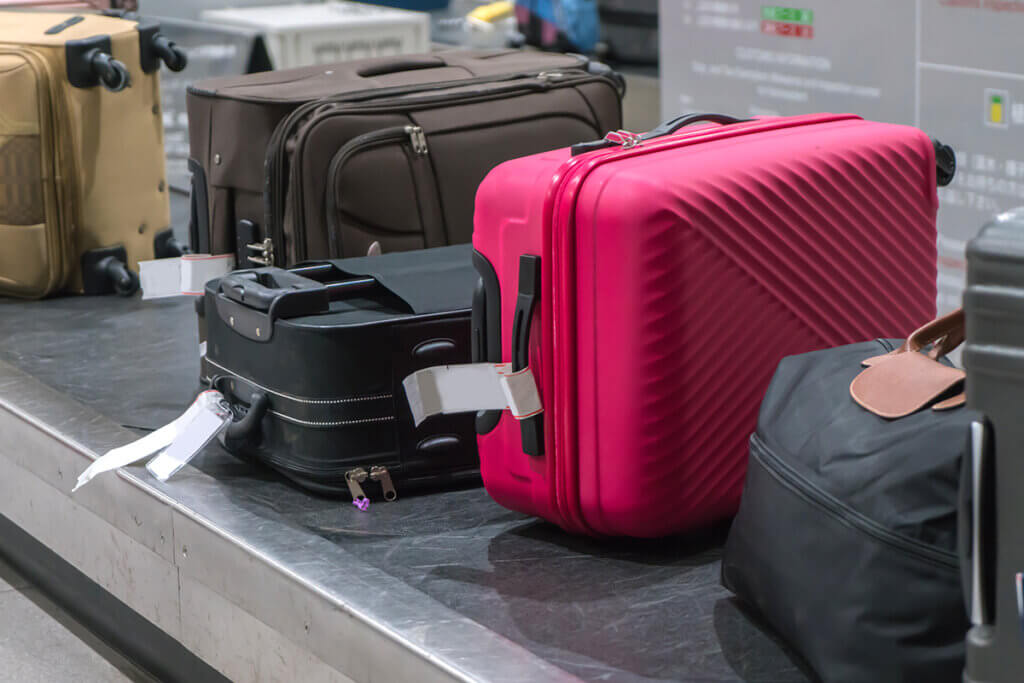
Single models and sets
You have the option of buying suitcases in sets. These usually contain three or four cases of the same model and design in different sizes. The price-performance ratio is the main selling point here. If you often travel with your family of several people, you would be well advised to buy a suitcase set. Here you usually get the suitcases at a lower price than if you were to buy each one individually.
Special features on the suitcase market
Rimowa and Samsonite are among the best-known manufacturers of travel suitcases, but in the other manufacturers have also made a name for themselves, for example Stratic, Titan, Delsey, Horizn Studios, or Roncato. Brands like American Tourister, Saxoline, Hauptstadtkoffer, and Travelite offer very inexpensive models for occasional trips.
Suitcase from Delsey
The French manufacturer Delsey offers suitcases with their own app. The Pluggage model series is available in three sizes. Each model is equipped with a suitcase lock that can be unlocked by digital fingerprint or via the company’s own app. Up to 30 different fingerprints can be stored. In addition, the suitcases have a GPS tracker that can be tracked worldwide with the help of the app.
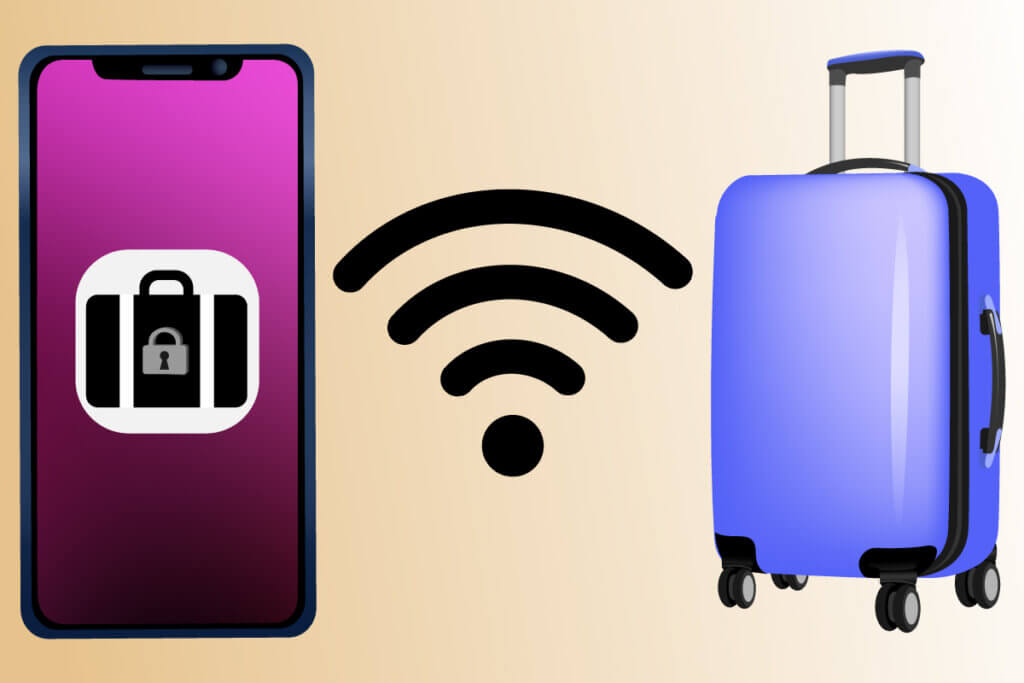
Set a distance and as soon as the suitcase moves further than the desired distance, the alarm mode reports via app. It also informs you as soon as the piece of luggage is within range. This is especially useful at the baggage carousel. If you place a power bank inside, then you can connect and charge your smartphone from the outside of the suitcase via a USB port. Last but not least, the high-tech suitcase from Delsey offers an integrated scale that shows the weight of the suitcase on a display or in the app. The models in the Pluggage series cost between $500 and $700.
Suitcase from Horizn Studios
The flagship model H6 from the Berlin start-up Horizn Studios has an integrated power bank. It has a capacity of 10,000 milliampere hours and can charge two devices simultaneously. According to the manufacturer, the power bank complies with the hand luggage guidelines of all airlines. However, remember to remove the power bank before the security check. The case costs about $400 but is also available for $300 without the power bank.
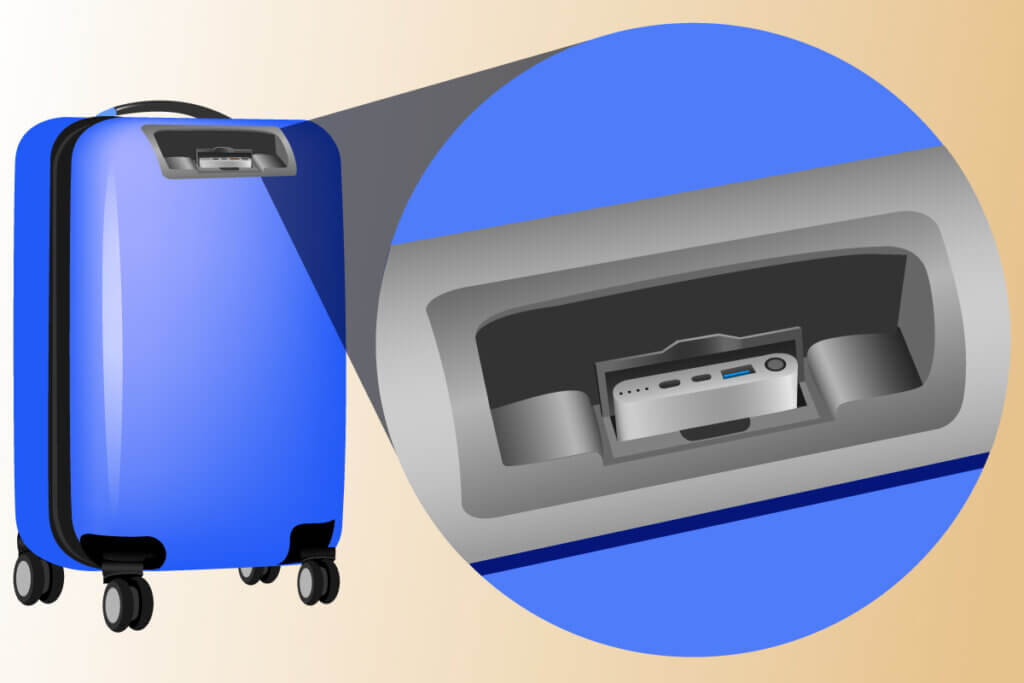
Suitcase from Rimowa
The models from the German manufacturer Rimowa, which bear the name suffix Electronic Tag, are equipped with an integrated data module. Thanks to the module, you can conveniently check in with your suitcase from home or on the road. First, install the company’s own app. Then send your boarding pass stored online to the suitcase’s data module via Bluetooth. Your ticket will now appear on a small screen on the surface of the suitcase. Note, however, that currently only Lufthansa, SWISS, Austrian Airlines, and EVA Air accept the electronic baggage tickets. The innovative Rimowa suitcases range in price from $1,000.
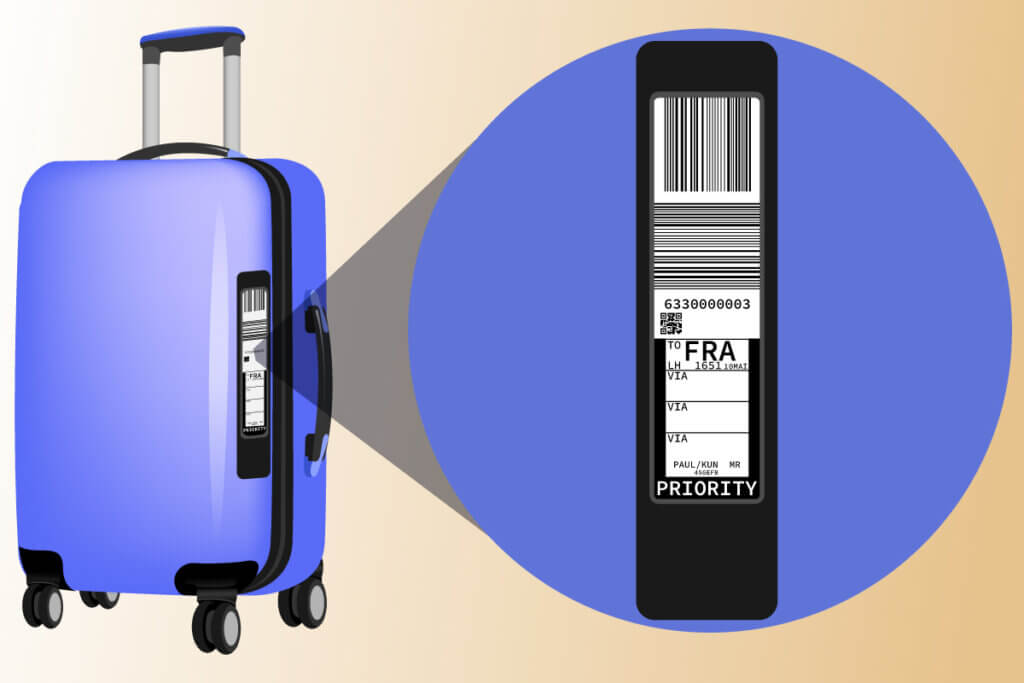
Cleaning and maintenance of a suitcase
A suitcase does not only get damaged by weather in the form of snow, rain, and hail but also sand and dust as well as liquids. Transport by plane or careless handling in trains and cars can also take their toll on a suitcase. The wheels should also be cleaned after every trip, as dirty wheel bearings impair the rolling ability of the suitcase.
Interior cleaning
- Remove loose dirt such as sand from the case.
- Use a vacuum cleaner to remove coarse dirt.
- If the inner lining is removable, wash it according to the manufacturer’s instructions.
- Otherwise, the interior can also be cleaned with a brush.
Exterior cleaning
- Soak the rollers in water and brush them clean.
- Vacuum the outside to remove coarse dirt.
- Use a soft brush to loosen fine dust.
- Use a damp cloth to wipe the textile fabric and spray it with waterproofing spray.
- Remove scratches in the plastic with acrylic polish on dark suitcases and polishing paste on light suitcases.
- Do not use cleaning agents that contain solvents.
What material are suitcases made of?
Suitcases go through a lot during their lifespan: They are often treated roughly or have to withstand the most adverse weather conditions. The right material will protect your personal belongings inside the case. Although every material used shields the surface of the case from external factors to some extent, they have different properties: For example, the material can determine whether a suitcase is only water-repellent or also waterproof. If you choose a hard-shell case, it is made of polypropylene, Curv, polycarbonate, aluminium, ABS, or, more rarely, HDPE. Soft-shell suitcases, on the other hand, are made of polyester, leather, nylon, or its replica Perlon.
Textile strength
In the past, the strength of the processed threads in a textile fabric was indicated with Denier (den). Denier means weight per thread length and 1 den corresponds to 1g per 9,000m. Since 1969, the unit Tex (tex) has been in common use. 1 tex is 1g per 1,000m. A suitcase should have a minimum value of 400 den or about 44 tex.
The hardliners among the suitcases
Hard cases are usually made of either plastic or metal. The materials are characterized by their durability and weather resistance.
Polypropylene
Cases with a polypropylene casing are particularly robust and durable. At the same time, they have a low tare weight due to the low material density. Polypropylene cases are also very easy to clean: Wiping them with a damp cloth is enough. However, the plastic loses its strength at sub-zero temperatures.
Curv
Curv suitcases from Samsonite are currently considered the lightest hard-shell suitcases. The innovative material is scratch-resistant and very robust. Thanks to the special processing, it can withstand temperatures of up to -40°F (-40°C) without becoming brittle. Due to the complex manufacturing process, Curv cases are more expensive than other hard and soft cases.
Polycarbonate
Currently the most widely used suitcase material, polycarbonate is flexible, stable, and easily stretchable. The material is also recyclable. Polycarbonate cases are water-repellent, but not waterproof. The models are characterized by a very low tare weight; only Curv is lighter. The production of polycarbonate is associated with high costs, which is why the end products are relatively expensive.
Aluminium
Aluminium is a very flexible metal that is ideally suited for the production of suitcases. The surface is weatherproof and resistant to impact and breakage. Although the material is corrosion-resistant, dents can be made by strong impacts. It is rarely used for conventional travel cases, but rather for pilot cases. The Topas series from Rimowa is currently the best-known aluminium suitcase series.
ABS
Acrylonitrile butadiene styrene copolymer is characterized by high stability and scratch resistance. However, ABS cases have two major disadvantages compared to the competition: Dents cannot be pressed out and sometimes visible creases or even cracks occur in the event of deformation. In addition, ABS is not recyclable and has a high tare weight.
The softies among the suitcases
Soft-shell cases are made of both textile and non-textile materials. They are characterized by their elasticity and flexibility. The material must also withstand extreme conditions and be easy to clean.
Nylon / Perlon
Manufacturers have been using nylon for various textiles since 1935. Perlon was first synthesized in 1938 in an attempt to reproduce nylon. Both synthetic fibres are used in the manufacture of soft-sided suitcases. The material can be compressed and squeezed without damaging the case. Both nylon and perlon are elastic and tear-resistant. The fabric is water-repellent, but not completely waterproof.
Polyester
Polyester refers to lightweight synthetic fabrics that are stable and tear-resistant. Suitcases made of polyester are also resistant to weathering and abrasion, which is why they are also very easy to clean. They are water-repellent, but not waterproof. The material is not only used for suitcases, but also for travel bags because of its light weight. Unlike nylon, it is recyclable.
Leather
The animal skin made chemically durable by tanning is hard-wearing, tear-resistant, and long-lasting. In addition, leather is temperature-resistant and water-repellent. However, it also requires a great deal of care. Nowadays, leather suitcases are rather rare. Some manufacturers such as Maxwell-Scott make leather trolleys that impress with their appearance. Leather is currently being used more widely in the manufacture of bags and backpacks.
A plane full of suitcases
It is impossible to imagine air travel today without suitcases. Almost every air traveller relies on the wheeled boxes. But especially at airports, travellers should follow certain rules and take extra good care of their luggage.
Which suitcases are suitable as carry-on luggage for air travel?
You are only allowed to take luggage into an aircraft cabin that approximately complies with the IATA standard. The International Air Transport Association recommends dimensions of 22 x 16 x 8 inches (55x40x20cm) or a total of 45 inches (115m) in length, width, and height. However, as this is not a mandatory standard value, airlines do not have to adhere to IATA‘s attempted standardization. The maximum weight of hand luggage can also vary from airline to airline. It usually ranges between 11 and 55 pounds (5-25kg) depending on the line and price class. For example, Air China only allows hand luggage weighing 11 pounds (5kg), while British Airways allows 55 pounds (23kg). American Airlines, Delta Air Lines, and Easy Jet, on the other hand, have no weight limit. Comparing 29 global airlines, the average maximum weight is about 21 pounds (9.4kg). For most airlines, however, the limit is lower than the average at 18 pounds (8kg).
One flight, three suitcases, lots of rules
Luggage on air travel can basically be divided into three categories: Checked baggage, special baggage, and hand baggage. In general, luggage items may not weigh more than 70,5 pounds (32kg) for reasons of occupational safety for personnel. Otherwise, they are considered air cargo to be loaded by machines and would have to be shipped separately with a cargo service provider.

Checked baggage
Checked baggage is luggage that exceeds the permitted hand luggage dimensions of an airline and must therefore be transported in the hold. For most airlines, the total dimensions of the luggage may not exceed 62 inches (158cm) and the suitcase may not weigh more than 55 pounds (23kg). Many airlines nowadays only accept hand luggage at no extra cost. Checked baggage, on the other hand, usually costs extra.
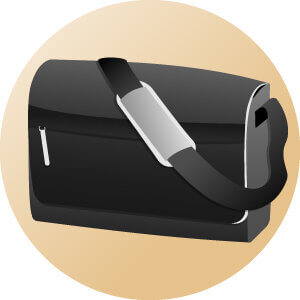
Hand luggage
Hand or carry-on luggage is a piece of luggage that you are allowed to take into the cabin. For this reason, you should primarily stow your valuables in it, such as travel documents, wallet, keys, smartphone, and laptop. Handbags, crutches, walking sticks, and umbrellas are also allowed. Smokers must carry e-cigarettes, lighters, and matches on their person, as these are not allowed in checked baggage. If infants under the age of two are travelling, it is permitted to carry a carrycot or buggy.
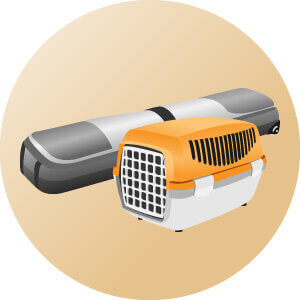
Special baggage
If the piece of luggage is larger than 62 inches (158cm) in the sum of height, width, and length, then it must be checked in separately. This applies in particular to sports equipment, musical instruments, and animals. Special baggage must be registered with the airline in good time before departure and is only permitted for an additional charge. Only smaller dogs and cats may be allowed in the cabin in a box under certain circumstances. All other animals are transported in an air-conditioned section of the hold. Guide dogs are exempt from the regulation.
What to do with lost luggage
If your suitcase disappears or is damaged during the journey, make a claim immediately at the baggage investigation office of the relevant airline after landing. The claim period is only a few days, and, once you leave the airport, the burden of proof is on you. This means that you must then prove that your suitcase was damaged or disappeared inside the airport. In over 90% of cases, the suitcase is found within the next few days and delivered to your home or hotel. Most airlines will provide you with an emergency pack to tide you over including essential hygiene items and clothing. Some airlines give you a lump sum of money instead. Still other providers will subsequently cover the cost of the items you have had to purchase.
If your suitcase is permanently untraceable or damaged, you are entitled to compensation. The maximum amount of the lump-sum compensation is $1,300. You need to fill out a questionnaire and state what was in the suitcase. You must state the age of the items and their current market price. Receipts and photos can be attached and are extremely helpful in many cases. Money will be transferred to you based on your answers. If your hand luggage goes missing, you are not entitled to compensation, unless the flight crew damages your luggage or personal belongings.
The best protection is vigilance
Make sure that the correct destination is indicated on your baggage tag directly after checking in. This way you can make sure that your suitcase is on the right plane. Choose an eye-catching colour or mark your suitcase to make it easier to find on the baggage carousel. If your suitcase goes missing, an address tag can help: Include your full home address and that of your destination. Put a note with both addresses in the suitcase in case the tag gets torn off. Always transport your valuables in your hand luggage. If you have room for an extra toothbrush and a small change of underwear, you will be prepared in case your suitcase gets lost.
How much should a good suitcase cost?
If you are a frequent traveller and opt for a high-quality suitcase from a market-leading manufacturer, you will quickly end up in the three-digit price segment. Samsonite suitcases cost between $100 and $500, while Rimowa, starting at $200, also offers models for over $1,000 that were made in collaboration with the luxury goods manufacturer Dior. Occasional travellers with a smaller budget can get sturdy suitcases for less than $100 from manufacturers such as Beibye and Hauptstadtkoffer. Always pay attention to the price-performance ratio: With a high quality, higher prices are often justified. If you opt for a suitcase set, you usually get three suitcases of different sizes for the price of two.
The alternatives
If you are going on a trip, you don’t necessarily have to use a suitcase. You also have the option of choosing another piece of luggage that meets your needs. Whether it’s more storage space, stability, practicality, or handling, there is an alternative for every travel occasion.
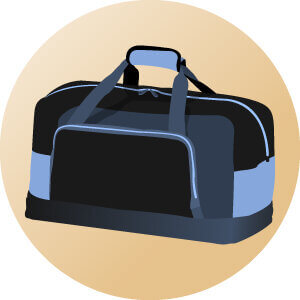
Duffel bag
Duffel bags are very elastic. Every part of the luggage can be utilized because there are no struts or brackets attached inside. The textile fabric takes up little space when unpacked. Various interior and exterior pockets offer additional storage space. Optionally installed wheels and a telescopic handle provide flexibility during transport. However, duffel bags are not well protected against shocks. They are suitable for short distances or uneven terrain, as they can easily be carried with a comfortable shoulder strap.
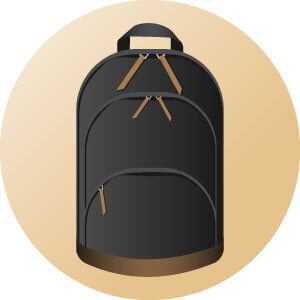
Backpack
Backpack models differ in size and layout. Small backpacks for sports or everyday use are best suited as hand luggage on planes, as their size corresponds to the permitted dimensions of most airlines. Large hiking backpacks can be used as an alternative to a suitcase. With their spacious interior and various extra pockets, they are in no way inferior to a suitcase. In addition, such backpacks are generally weatherproof.
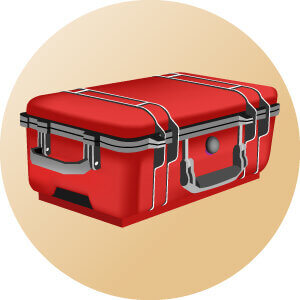
Protective suitcase
Protective suitcases are suitable for transporting fragile and delicate items as well as things of particularly high value, such as electrical appliances. The boxes are often equipped with wheels and a telescopic handle to increase transportation comfort. They are also impact- and scratch-resistant as well as dirt-, dust-, and waterproof. Inside, there are foam pads on which the belongings lie softly bedded. Protective suitcases can be closed airtight and have a pressure equalization valve to ventilate the box.
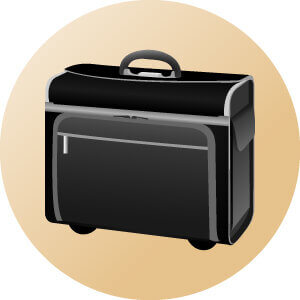
Pilot suitcase
Pilot cases are similar in appearance to a conventional suitcase. However, they offer far less storage space. There is hardly enough room for clothes and larger items. However, they are ideal for business trips because they offer plenty of space for documents, office supplies, and small electrical appliances. Thanks to numerous compartments, the inside remains orderly. Pilot cases are often equipped with wheels and a telescopic handle. Their special feature: When the cases are upright, they are accessible from above, which allows quick access to the contents.
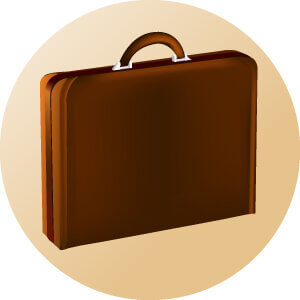
Briefcase
For many professions, a briefcase is an important utensil in everyday work. All relevant items, such as documents, smartphone, tablet, or notebook can be stored in it and organized with a clever interior division. A high-quality briefcase made of durable material such as leather or aluminium protects the valuables inside. When travelling, the small cases are only suitable as hand luggage. There are also hard-shell briefcases that can be attached to the telescopic handle of your suitcase. Here, too, Samsonite and Rimowa are well-known manufacturers of high-quality suitcases.
Images 1–5: © FinalCheck | Image 6: © trekandphoto / stock.adobe.com | Image 7: © CasanoWa Stutio / stock.adobe.com | Images 8–18: © FinalCheck


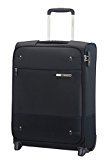
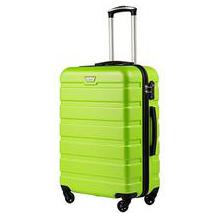
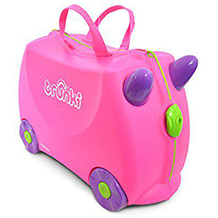
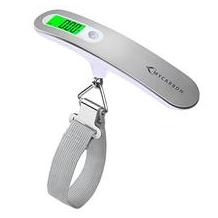
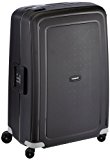
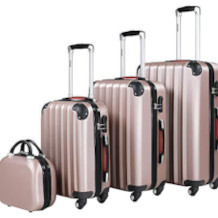









 12,497 reviews
12,497 reviews
